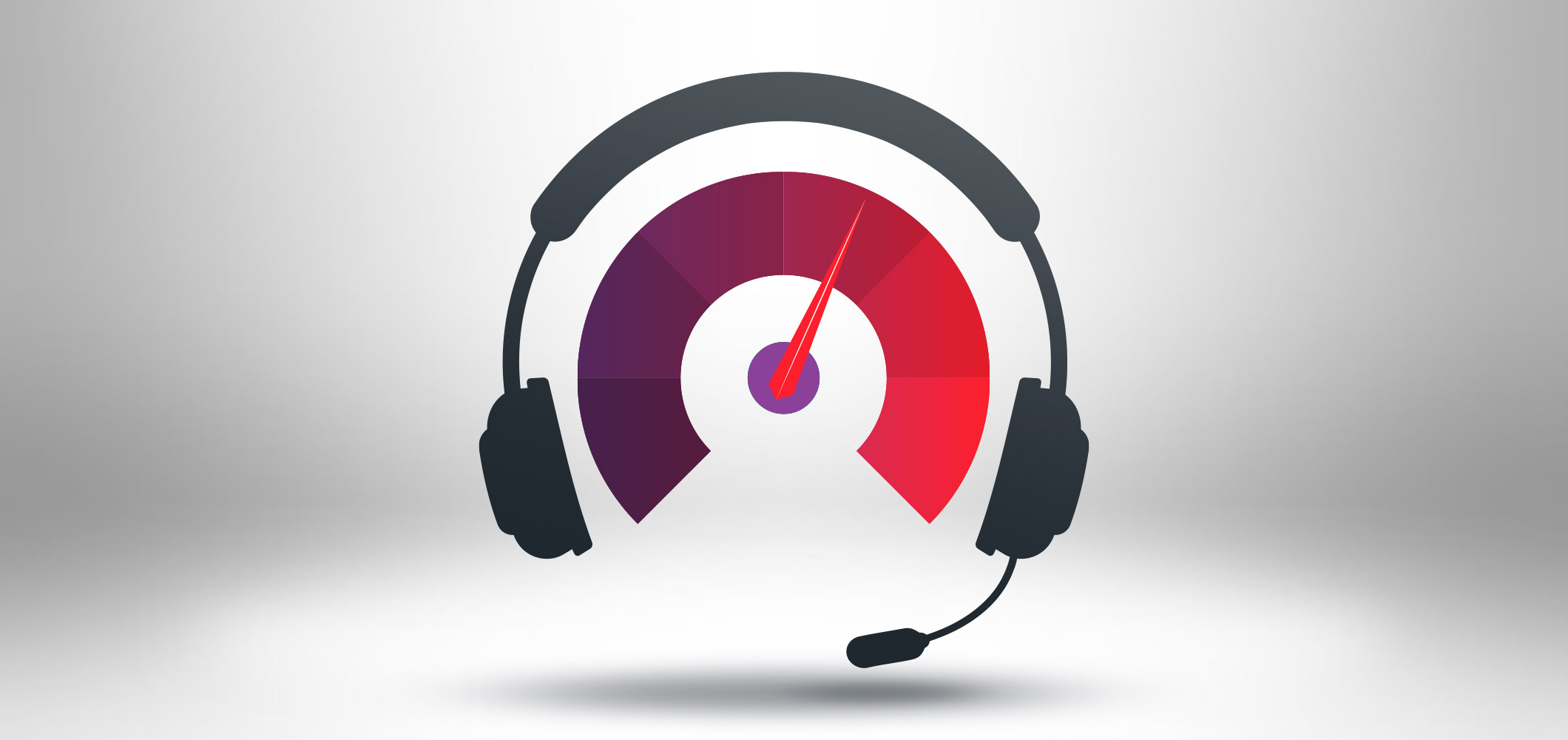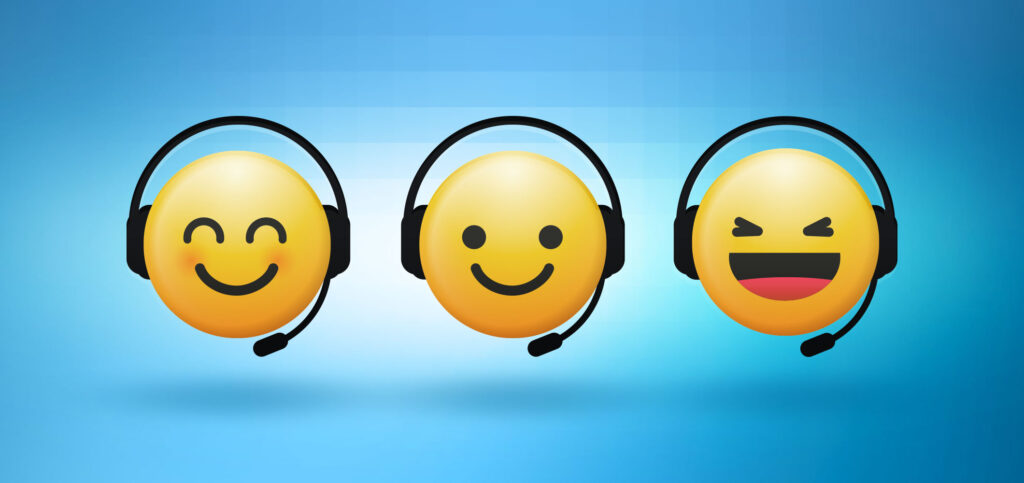
Most successful organizations track key performance indicators (KPIs) to make informed business decisions. Contact centers are no different. Defining and measuring the right metrics can lead to substantially higher standards of customer service and more revenue.
Here are the 15 contact center KPIs that companies report as the most important — and the formulas and tips you’ll need to monitor them effectively.
1. Average handle time (AHT)
An average handle time is how long it takes to help a customer in a call center. You can track average handle time in your call center software. AHT is one of the main metrics to track in a contact center, according to Gartner.
AHT = (Total talk time + Total hold time + Follow up time) / Total number of calls
2. First response time (FRT)
A customer inquiry or support ticket’s First Response Time represents how fast an agent responds to the customer. Also known as first reply time, the speed at which you acknowledge your customers’ questions reflects your commitment to customer satisfaction.
To calculate FRT, use the following equation:
Sum of all FRTs in a set period / Total number of resolved tickets in that time
3. Average abandonment rate
An abandoned call occurs when someone hangs up during a conversation. This occurs before an agent can resolve their concern or answer their question, or while the agent is trying to provide help.
You can measure the average abandonment rate by shift, day, or week. The average abandonment rate is between 5 – 8%.
Here’s how to calculate your average abandonment rate:
Total number of abandoned calls / total number of calls
4. Percentage of calls blocked
A “percentage of blocked calls” measures how many inbound calls your phone system drops. This is often to do staff shortage, long wait times, or technological failure. Ideally, you want to keep the percentage of calls blocked below 2%.
Here is the two-step formula:
Number of calls that didn’t reach agent – (abandoned calls + calls resolved through automation) = X
(X / Total incoming calls) x 100
5. Average speed of answer (ASA)
The average speed of answer is how long it takes a call center to answer a customer’s call. The average ASA time is 28 seconds. A long ASA could mean agent burnout and poor customer experience.
The formula for ASA is:
Average time in queue / Number of voice calls handled
6. Average time in queue
The average time in queue is how long callers wait to speak to an agent. If customers feel they have to wait too long, they’ll likely give up and not call back.
7. Net Promoter Score (NPS)
NPS is the gold standard for measuring customer satisfaction and company perception. There is one question for customers to answer: “Would you recommend our brand to a friend or family member?”
They then rate their experience on a scale of 0 to 10. 0 means they are unlikely to recommend you; 10 means they likely will.
8. Average after-call work time
After Call Work (ACW) are the tasks agents do after each customer interaction. Also called post-call processing, tasks include logging outcomes, scheduling follow-ups, or information colleagues about a call. Once agents complete their ACW, they are available for another call.
The average after-call work time is 6 minutes. Reducing ACW by just 30 seconds affects contact center productivity and can save $2.5K USD each day.
9. First call resolution (FCR)
Using the first call resolution rate (FCR), a contact center can determine how well it is at resolving issues or needs the first time a customer reaches out. A successful resolution on the first call means no follow-up is needed. Also known as first contact resolution, the standard rate is between 70 – 79%.
10. Customer satisfaction score (CSAT)
CSAT is a common call center metric that measures how good your customer experience is. You can measure it with a customer feedback survey that asks:
How would you rate your overall satisfaction with the service you received?
Customers can respond using a 1 to 5 scale: 1 being very unsatisfied and 5 being very satisfied. To calculate CSAT, use the following formula:
(Number of satisfied customers / Number of survey responses) x 100 = % of satisfied customers
11. Real-time adherence (RTA)
Real-time adherence shows if agents are following the schedule you gave them. It compares what agents are actually doing versus what they are scheduled to do. An ideal RTA is 85%.
The formula for measuring adherence is:
(Scheduled time – Time out of adherence)/ Scheduled time = Adherence
12. Call arrival rate
An arrival rate tells you how many calls come into a contact center in a period of time. It shows how many calls are handled or put on hold. Ideally, you want to report on your call arrival rate to understand daily call volume.
The formula for determining call arrival rate is simple:
Number of incoming calls / minutes per day
13. Occupancy rate
Your occupancy rate is the percentage of time agents spend talking to customers and waiting for calls. An occupancy rate of 90%, for example, means that agents dealt with customers 90% of the time. The remaining 10% was spent between calls.
The formula for occupancy rate is:
(Handle time / Available time) – Auxiliary time
14. Agent turnover rate
Agent turnover rate measures the number of agents who leave your contact center during a specific time period, usually one year. The average contract center turnover rate is between 30-45%.
15. Customer Effort Score (CES)
CES measures how much effort a customer has to put in to interact with you, such as answering a question, filling a request, or resolving an issue.
Common Challenges When Choosing Contact Center KPIs
Aligning KPIs with business goals
Contact center monitoring has been around for decades. Yet now, agents deal with more than just voice conversations. Support tickets, website inquiries, text messages, live chat, and social media conversations—it’s challenging to maintain standardized operations and meet SLAs.
Laura Dentith, Business Support Manager at Clarion Security Systems, who’s spent 21 years managing call center operations in the UK, explains the biggest challenge is “getting a balance between customer experience and productivity and efficiency. You don’t want to take anything away from these elements so you’d look at where quick wins are regarding average handle time (AHT), without reducing quality.”
Trevor Larson, CEO and founder of Nectar, agrees. “It’s hard to identify which KPIs will be the most effective in measuring your contact center’s success. You’ll want to avoid choosing KPIs that are too vague or that don’t reflect specific goals,” he adds.
Your contact center KPIs must relate to the quality of your customer’s experience. Focus only on KPIs that meet the goals of improving customer satisfaction and increasing loyalty.
Making sure KPIs are measurable
Hitting your goals can increase customer retention and call center ROI. But you can only hit goals if you’re tracking KPIs that are measurable. A call center software like Cresta can ensure you’re tracking and reporting on key contact center metrics that impact your bottom line.
Leveraging Your Contact Center KPIs for Greater Success
As a contact center manager, keeping your eye on these KPIs helps you improve customer satisfaction and agent productivity. Using a call center software can automate the reporting process and ensure you have the resources to meet your SLAs, which leads to higher revenue for your department.


